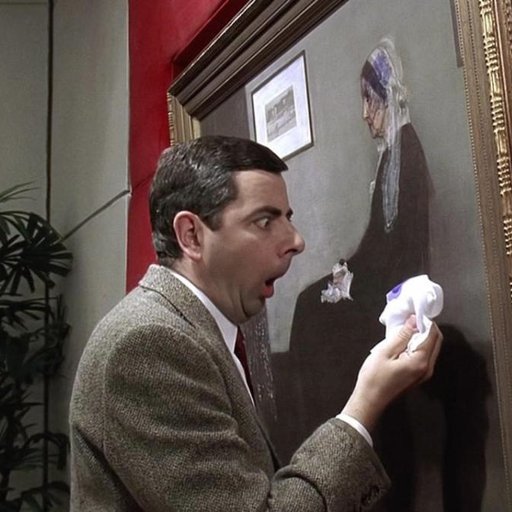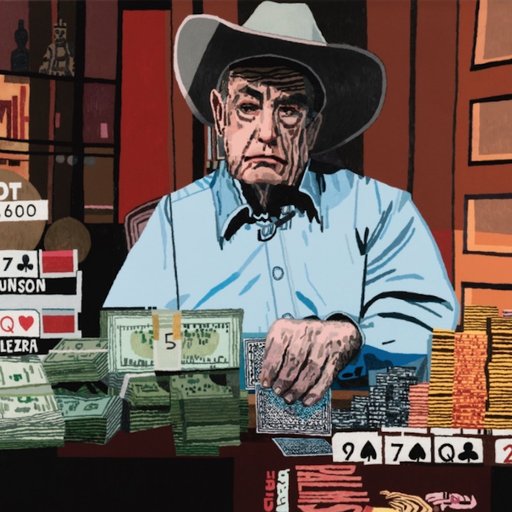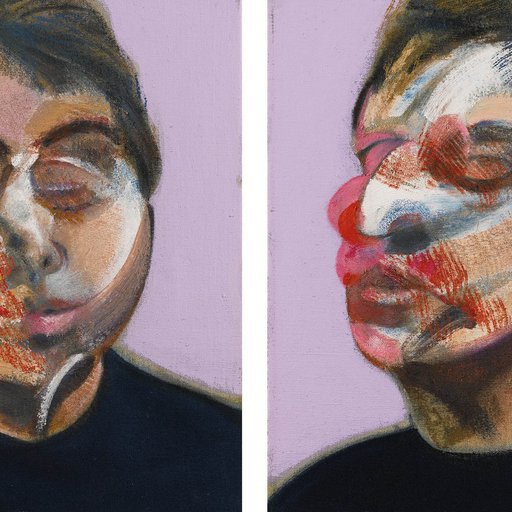Find a class curriculum for arts administration, business, or marketing, and we can almost guarantee How to Start and Run a Commercial Art Gallery by Edward Winkleman will be listed on the syllabus. For the past decade, the comprehensive guide has helped fledgling gallerists get off the ground (or perhaps more often, encourage potential gallerists to steer clear of the expensive endeavor all together!). But a lot has changed since the book came out in 2009, not least of which is the proliferation of the internet.
Which is why Winkleman teamed up with Patton Hindle to co-author a revised second edition of the book, which was released just last month. Hindle—formerly Artspace's own director of partnerships, currently working as Kickstarter's director of arts—and Winkleman—the founding-director of the Moving Image Video-Art Fair, and owner of the now-defunct Edward Winkleman Gallery—added a whole new chapter about how galleries can leverage the power of the internet. Read the excerpted chapter below.
...
Over the last decade there have been significant changes in the way the art world operates. While the Internet and e-commerce have revolutionized just about every industry, the art world has been slow to develop with them. However, we are finally seeing significant moves toward innovation within e-commerce and the art market. Several online sites have cropped up to help facilitate sales; social media has drastically altered how dealers and artists communicate; and print magazines are increasingly having to move online to stay viable. In this chapter we’ll walk through several of these changes and how you can use them to your advantage in running a gallery.
ART AND E-COMMERCE
There are several online sites that allow for the sale of artworks to take place through a variety of ways. Artnet (www.artnet.com) was the first of the online players. Founded in 1989, the site continues to exist as a listing site for galleries, an auction price database, an online auction site, and an art news outlet. Galleries can pay a monthly subscription fee of $300–$400 per month to list available works by their artists. Interested clients can click to contact a gallery and request further information and pricing. Additionally, if you’re working in secondary-market sales, you may consider an annual subscription to the price database, which shows all previous auction records for an artist and can help you determine fair market value for a secondary market artwork. This information does not come cheaply though. A day pass will set you back $32.50 for a mere 5 searches, and annual memberships range from $450 per year for 150 searches to $1,175 per year for 450 searches. Pricing for more searches must be discussed with Artnet directly.
Perhaps one of the biggest competitors to the Artnet model is Artsy.net. Founded in 2010 by Carter Cleveland, Artsy began as an art genome project aiming to make art accessible to anyone with an Internet connection. They have since shifted their model to one somewhat similar to Artnet. They offer galleries monthly subscriptions to list their works (ranging from $400 to $5,000), run auctions online with nonprofit partners and Sotheby’s and Phillip’s auction houses, host an online magazine, and also offer art fair previews in advance of a fair opening. Artsy has seen significant growth in its user base and has had significant fund-raising from notable people in the contemporary art world, including Larry Gagosian, Dasha Zhukova, and Marc Glimcher. Its ease of use as a site makes it great for discovering new artists and artworks, which of course can prove a valuable way to reach new collectors.
One of the few actual e-commerce sites within the art world, Artspace.com, founded in 2009, has set itself apart from the listing sites by actually offering the ability to transact online (full disclosure: Patton worked at Artspace as the director of gallery and institutional partnerships for three years). Founded by Chris Vroom and Catherine Levene, Artspace aimed to help galleries, nonprofits, and publishers move inventory that might not easily reach the right collectors as a nonprofit may not have a sales staff, or a gallery may be focused on selling the $500,000 piece rather than the $5,000 or $10,000 piece sitting in storage. Artspace operates on a success-based model, meaning if you don’t sell you don’t have to pay anything. If a work sells, they take a 20 percent commission on works under $20,000 and a 10 percent commission on works over $20,000. Artspace also manages the relationship with the client for you and handles the logistics. This can be an easy, no-risk way to test out offering work online; however, you should note you will not have direct correspondence with the collectors.
Finally, 1stdibs.com has been dominating the design marketplace for years now. Founded in 2001 by invitation only, 1stdibs began as a listing site for furniture and design dealers. It has expanded over the years to include art and also allowed for e-commerce in which collectors can directly transact online. If your gallery model includes design or secondary market prints, 1stdibs could be a great way for your to test out your presence online. Many galleries who were very happy to work with 1stdibs in the beginning, however, have recently begun to grumble about some of their newer policies, which intercede between the gallery and the buyer. This may be worth considering when you’re looking for online platforms to help your new gallery grow.
The 2016 TEFAF market report noted that online sales were the only part of the art industry to see growth in 2016; auctions, gallery sales, and fair sales were all in decline. It’s worth noting that above a certain price threshold you may expect a collector to ask to see the work in person before buying. Online primary market sales still tend to be easiest under the $20,000 price point. But increasingly collectors note that they appreciate the anonymity of purchasing art online, and it can remove some of the stressors of having to either be physically in the same location as a gallery and the intimidation of walking into a gallery.
SOCIAL MEDIA
We’ve discussed this earlier under promotional habits, but it is worth reiterating again here as it becomes very much part of your digital marketing presence. As it stands now, social media is free to use and a way for you to have a direct line to your community. It can be an excellent way to build buzz around an exhibition or artist, as well as to share the gallery’s point of view. Facebook was the go-to tool for many years and still is helpful in listing your exhibitions and inviting friends to help spread the word about an opening. However, engagement on business pages has seen a decline as more and more galleries, artists, and collectors are turning toward Instagram for sharing information. This simply makes sense in a visual industry to be sharing imagery of an artist’s work or and exhibition. You can tease images before a show opens or reveal behind-the-scenes studio visit photographs to help build momentum for an artist’s audience.
Galleries and artists have been able to use social media to sell work, too. Instagram allows your program to have a “personality.” We recommend having fun with it if you’re a smaller/younger enterprise. Bigger galleries may take a more professional approach, using only high-resolution retouched images and consistently posting at specific intervals. Either approach can work well; it simply depends on your gallery mode and identity. With your artists’ use of Instagram, it is important to discuss guidelines as to what is productive or perhaps counterproductive to post. For example, say you have a waiting list for an artist’s work and they post new images; both you and the artist could be bombarded with interest and difficulty in navigating who is next in line. Additionally, before an exhibition, you may not want specific details about the show revealed, especially if you’ve pitched an exclusive to a press outlet or promised specific works to clients. Just the right amount of information can, however, be a motivating and buzz-building tool before an exhibition opens.
EDITORIAL
As mentioned earlier, many of the e-commerce sites offer editorial platforms. With print media becoming tougher and tougher to profitably produce, many magazines are moving online. What this means is more real-time coverage of an exhibition. You should do your research among the major sites: Artnews, Artnet news, Artspace magazine, Hyperallergic, Artsy magazine, Cultured, and Artforum, to name a few, and see which writers are regularly writing about exhibitions near you. As most of these writers are freelance, you should feel free to reach out to them directly inviting them to a show or an artist’s studio; they may have multiple outlets they can pitch to.
ALTERNATIVE FUNDING MODELS
This area will likely be the most interesting to watch over the next five to ten years. Websites like Kickstarter and Patreon offer new forms of support for creative communities and seek to redefine notions of patronage. Kickstarter was founded in 2009 by three creative individuals—an artist, a musician, and a designer—with the intent of solely supporting creative projects. They coined the term crowdfunding and helped to train a community to understand how anyone can be a patron for micro amounts of money, democratizing the funding process, while simultaneously creating new access and excitement around creative endeavors. To date, Kickstarter has funded over $82.37 million in arts projects alone, and it’s growing. It has quickly grown in the arts community with artists, galleries, and curatorial practices all creating projects to share with their respective communities. Kickstarter serves not only as a funding tool but as a marketing a promotional effort too in this regard. It is an excellent option if you’re looking to raise attention and funds around a project that may not always be the most commercially viable exhibition or artists; however, the work is important and relevant.
Patreon is also changing this landscape through ongoing sustained funding for creative individuals. It began in 2013 and has grown rapidly within in the podcast and gaming community; however, it is used by several artists and arts organizations as a way to provide ongoing interaction with their communities. In turn for a micro pledge amount of money on a monthly basis, the artist/organization will give their subscriber a piece of exclusive content. While the arts interaction on Patreon is significantly lower than say, Kickstarter, as artists, artist collective spaces, and new gallery models appear, the site may be able to offer a way to garner guaranteed monthly income. In fact, at the time of this writing, Kickstarter has recently launched a similar monthly subscription service called Drip. Though it is still in a public beta phase, the majority of creators on it are artists and art organizations. It will be interesting to see how this platform grows. Crowdfunding sites like Kickstarter and Patreon offer the opportunity for a gallery and artist to explore ideas outside of the mainstream market model. They have the chance to reshape how the art world exists now and expand galleries’ and organizations’ ideas of patronage in a substantial way, especially as organizations look to increase their audiences.
LESSONS LEARNED
The Internet has dramatically reshaped the art world, calling for greater transparency with pricing but also delivering access to artists, dealers, and their communities in a new and exciting way—breaking down the old guard of the removed dealer. Having lived and worked through this significant transformation, we urge you to both be open to new models but also to take all of your options seriously, be it selling online or running a crowdfunding campaign. Each of these decisions has the opportunity to affect your core business and make you more accessible but also should be taken with a grain of salt. They will never be a cure-all; rather, they will most likely simply supplement the core activities of your business.
RELATED ARTICLES:
How to "Do" Gallery Openings: What to Expect, What to Wear, and How to Network (Don't Do It!)



























